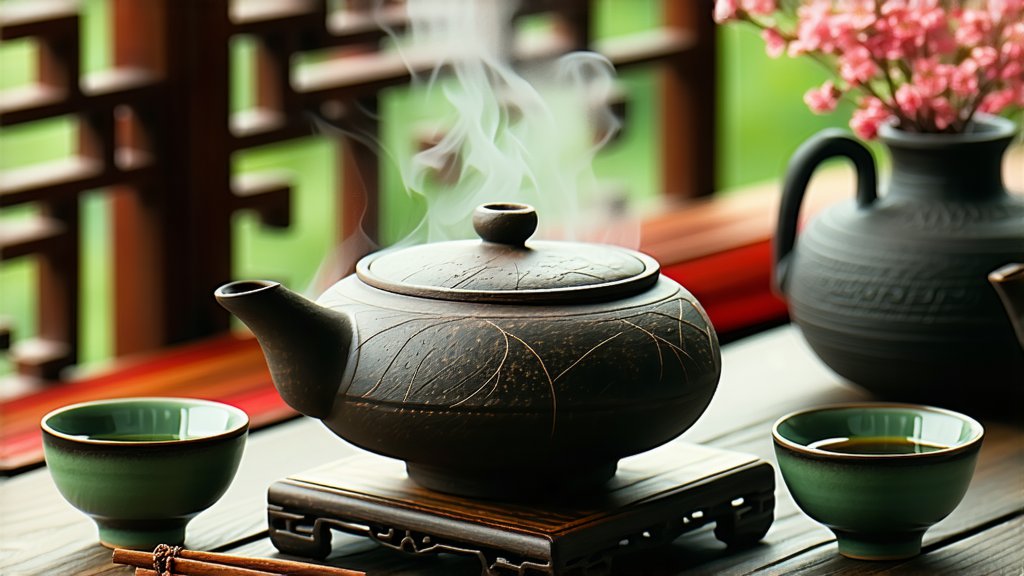
Pu-erh tea, a revered gem within the vast spectrum of Chinese teas, stands as an epitome of cultural heritage and meticulous craftsmanship. Originating from the ancient tea-growing regions of Yunnan Province in southwestern China, this unique variety of dark tea has captured hearts and palates worldwide for centuries. Its rich history, intricate production methods, and distinctive flavor profile make it a fascinating subject for exploration.
Historical Roots
The story of Pu-erh tea dates back over a millennium to the Tang Dynasty (618-907 AD), though its prominence surged during the Ming (1368-1644) and Qing (1644-1912) dynasties. Initially, tea leaves were transported along the Tea Horse Road, a network of ancient trade routes, to Tibet and other regions. Over time, the tea underwent natural fermentation due to the long journey and humid climate, leading to the development of what we now know as Pu-erh tea. Its name is derived from the market town of Pu'er in Yunnan, where tea caravans gathered before embarking on their arduous journeys.
Varieties and Classification
Pu-erh tea is broadly categorized into two types: raw (Sheng) and ripe (Shou). Raw Pu-erh undergoes minimal processing post-harvest, allowing it to age naturally over years or even decades, developing complex flavors and aromas through microbial fermentation. In contrast, ripe Pu-erh undergoes a controlled fermentation process known as 'wo dui,' which accelerates aging and imparts a mellow taste within a shorter period. Both varieties offer unique sensory experiences, with raw Pu-erh being more robust and evolving, while ripe Pu-erh presents a smoother, earthier profile.
Crafting the Elixir
The art of making Pu-erh tea begins with the careful selection of Camellia sinensis var. assamica leaves, primarily grown in the highlands of Yunnan. The production process involves several stages:
- Plucking: Tea leaves are handpicked during specific seasons, with spring harvest considered the finest due to the tender shoots and leaves.
- Withering: Fresh leaves are spread out to lose moisture, softening them for rolling.
- Rolling: Leaves are rolled into tight spirals or cakes, which helps release juices and initiate enzymatic reactions.
- Fermentation: For Sheng Pu-erh, this step occurs naturally over time as the tea ages. Shou Pu-erh, however, undergoes a piling process where piles of tea are moistened and turned regularly to encourage microbial activity, accelerating fermentation.
- Drying: The tea is dried to halt further fermentation and prepare it for storage or packaging.
- Aging: Raw Pu-erh continues to mature in suitable conditions, enhancing its depth and complexity.
The Art of Tasting
Appreciating Pu-erh tea goes beyond mere consumption; it is an experience that engages all senses. Here's a guide to savoring this exquisite beverage:
- Preparation: Use a Yixing clay teapot or a Gaiwan, ideal for preserving heat and allowing the tea to 'breathe.' Rinse the leaves briefly with boiling water to 'wake up' the tea.
- Infusion: Steep the tea at 95-100°C (203-212°F) for about 5-10 seconds initially, gradually increasing steeping time for subsequent infusions. This gradual extraction reveals different flavor notes.
- Observation: Note the color transformation of the liquor from bright amber to deep burgundy with each brew.
- Aroma: Inhale the evolving scents—earthy, woody, floral, or even hints of spice, depending on the tea's age and variety.
- Tasting: Sip slowly, allowing the tea to coat your palate. Feel the texture, whether velvety or astringent, and appreciate the balance between sweetness, bitterness, and umami.
- Aftertaste: Pay attention to the lingering sensations and how they evolve with each successive cup.
Conclusion
Pu-erh tea embodies the essence of Chinese tea culture—its history intertwines with legend, its craftsmanship reflects patience and precision, and its tasting ritual invites mindfulness and appreciation. As you delve into the world of Pu-erh, remember that each cup tells a story, a testament to centuries of tradition and the enduring bond between man and nature. Whether you're a seasoned connoisseur or a curious newcomer, let Pu-erh tea be your gateway to understanding the profound depths of Chinese tea artistry.